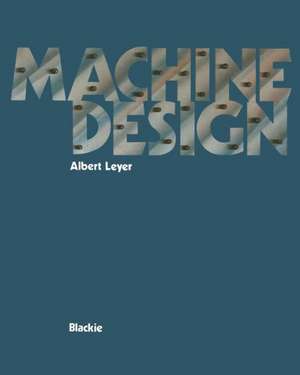Machine Design
Autor Albert Leyeren Limba Engleză Paperback – 12 feb 2012
Preț: 381.81 lei
Nou
Puncte Express: 573
Preț estimativ în valută:
73.06€ • 76.44$ • 60.69£
73.06€ • 76.44$ • 60.69£
Carte tipărită la comandă
Livrare economică 03-17 aprilie
Preluare comenzi: 021 569.72.76
Specificații
ISBN-13: 9789401160087
ISBN-10: 9401160082
Pagini: 128
Ilustrații: XII, 116 p.
Dimensiuni: 203 x 254 x 7 mm
Greutate: 0.27 kg
Ediția:Softcover reprint of the original 1st ed. 1974
Editura: SPRINGER NETHERLANDS
Colecția Springer
Locul publicării:Dordrecht, Netherlands
ISBN-10: 9401160082
Pagini: 128
Ilustrații: XII, 116 p.
Dimensiuni: 203 x 254 x 7 mm
Greutate: 0.27 kg
Ediția:Softcover reprint of the original 1st ed. 1974
Editura: SPRINGER NETHERLANDS
Colecția Springer
Locul publicării:Dordrecht, Netherlands
Public țintă
ResearchCuprins
I. General Aspects of Design.- 1 The nature and value of design.- 2 Where does invention end and design begin?.- 3 Design components.- 4 The need for a clear statement of the problem.- 5 The right amount of perseverance.- 6 Design and calculation.- 7 The art of moderation.- 8 The courage to be exceptional.- 9 Design and aesthetics.- 10 Design and skill in drawing.- 11 Standards.- 12 A brief theory of engineering surfaces.- 13 Limitations and changes in the production process.- 14 Control and self-control.- II. General Form Design.- 15 Introduction to general form design.- 16 Elements of design.- 17 The principle of constant wall thickness.- 18 Strong and weak shapes.- 19 The phenomenon of ‘lines of force’.- 20 Effect of shape on loading and stresses.- 21 The stress-concentration index (or ‘notch sensitivity’) of materials.- 22 Designing to match the strength flow.- 23 The shaping of corners and guide facings.- 24 Designing to match fluid flow.





